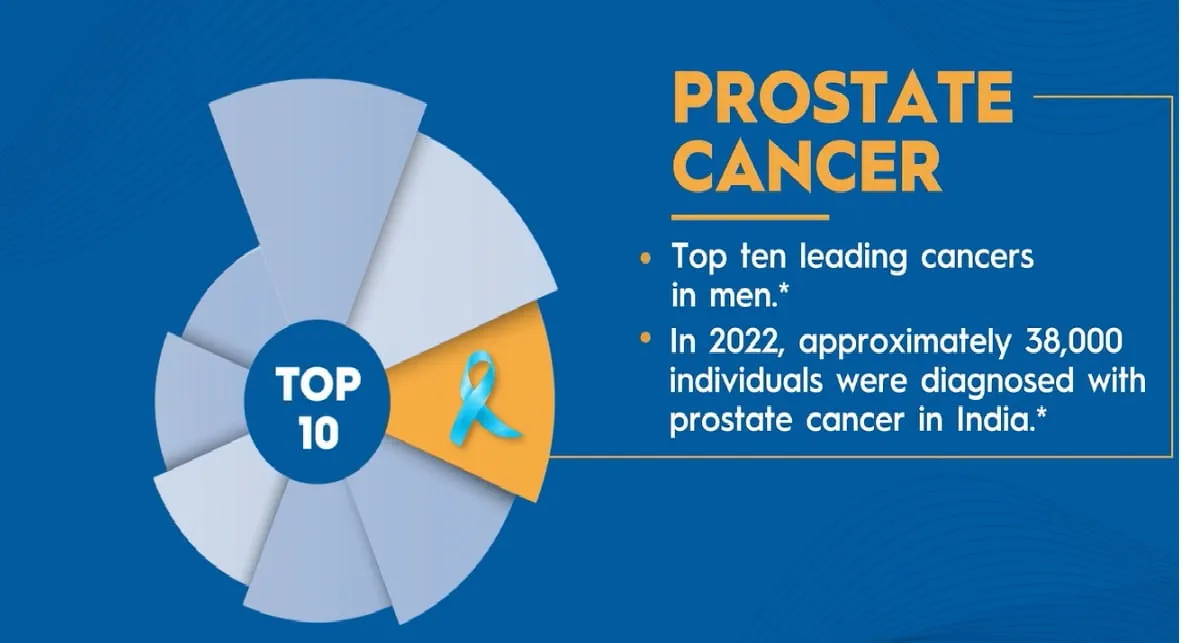EAU 2024: Familial Prostate Cancer: By A. Morgans Boston
The speaker emphasized the prevalence of DNA repair defects and mutations, such as those seen in Lynch syndrome, among patients. These genetic alterations manifested across different disease stages, from local to metastatic. Importantly, as the disease advanced, there was a notable increase in these mutations among patients experiencing relapse and those in advanced stages, indicating a grim prognosis. BRCA2 stood out as the most common mutation, affecting approximately 12 percent of metastatic prostate cancer patients. Remarkably, these mutations did not necessarily correlate with age at diagnosis or familial history, prompting guidelines to advocate for germline genetic testing for all metastatic prostate cancer patients. This testing was crucial for identifying prevalent mutations like BRCA2. Moreover, there was a marked disparity in mutation prevalence between primary/localized and metastatic disease, with the latter showing higher rates. The speaker highlighted that recent update were made to the guidelines, with the recommendation for germline testing in men with metastatic prostate cancer being rescinded. The speaker advised to review the updated guidelines to grasp this modification fully. While there was a mention in the text suggesting consideration of germline genetic testing for these patients, it no longer constituted an official guideline statement.
The speaker outlined the current guideline statement, emphasizing key recommendations. He emphasized that patients with a BRCA mutation identified on somatic testing should strongly consider germline testing, as it may impact family members. Additionally, germline testing is strongly recommended for patients with a family history of high-risk mutations or multiple cancers on the same side of the family, aligning with hereditary concerns. A weaker recommendation is made for patients with multiple family members diagnosed with prostate cancer under 60 or those who have lost a family member to the disease. Lastly, he noted that these differences are crucial to acknowledge. For metastatic castration-resistant prostate cancer (CRPC), due to treatment implications, somatic and/or germline molecular testing is strongly recommended.
The speaker delved into the Impact study, showcasing its revelations regarding BRCA2 mutations and their implications for prostate cancer treatment. It uncovered a significant increase in prostate cancer diagnoses upon biopsy among individuals with BRCA2 mutations, often at a younger age and with a higher likelihood of clinically relevant, high-risk diseases. Additionally, recent cohort studies affirmed these findings, illustrating a heightened prevalence of DNA repair defects, including BRCA2 mutations, in cases of high-risk disease and node-positive prostate cancer. Upon analyzing treatment outcomes, it was found that patients with BRCA2 mutations managed with active surveillance might undergo Gleason score upgrades over time, underscoring the imperative for vigilant monitoring. Moreover, the speaker highlighted research by Elena Castro, demonstrating poorer survival outcomes for patients with BRCA mutations, even in localized disease settings post-surgery or radiation therapy. These findings underscored the critical role of identifying BRCA mutations as prognostic indicators and integrating this knowledge into treatment discussions within the medical community.
The speaker underscored the significance of screening for genetically related malignancies, emphasizing the evolving understanding of cancer risks associated with BRCA2 mutations. Crucial considerations in assessing these risks were highlighted, with particular reference to the recently updated National Comprehensive Cancer Network (NCCN) guidelines. These guidelines have shifted focus from prostate cancer to the Hereditary Breast and Ovarian Cancer (HBOC) guidelines. Under the updated recommendations, male patients over 50 with BRCA2 mutations are advised to undergo annual mammograms, while those over 35 are encouraged to perform self-breast exams. This shift underscores the necessity of considering male breast cancer, a historically overlooked topic. Additionally, for pancreatic cancer screening, the latest guidelines advocate screening only among those with a family history of the disease, utilizing methods such as magnetic resonance cholangiopancreatography (MRCP) or endoscopic ultrasound (EUS). The speaker stressed the importance of comprehensive patient history-taking and personalized screening approaches, particularly regarding melanoma screening for individuals with high sun exposure. This broader perspective on cancer risk management in BRCA2 mutation carriers highlights the need for proactive screening measures and comprehensive care strategies.
During the address, the speaker discussed screening strategies for germline mutations based on recent clinical trials. One study compared video pre-test counseling to traditional genetic counselor sessions. Surprisingly, patients had similar knowledge levels but reported higher distress levels when interacting with a human counselor. Regardless of the counseling method, patients experiencing anxiety due to pathogenic variants or uncertain significance were offered genetic counseling afterward.
In conclusion, the speaker highlighted that guidelines, including those from EAU, recommend germline testing for patients with a limited family history, a practice that continues to evolve. As the identification of BRCA mutations in cancer-free individuals may become more common, it's important to consider this in our practices. Patients with BRCA2 mutations face a higher risk of upstaging during surveillance and poorer outcomes with definitive treatment, emphasizing the need to consider other malignancies. Widespread testing and mainstream counseling are crucial for scalable solutions.
Case Presentation: 35 yrs, BRCA 2+, No previous history By P. Rajwa
In this case, a 35-year-old man, recently married and without comorbidities, has a family history of prostate and gastric cancer. His brother, 42, tested positive for a BRCA2 mutation, prompting genetic counseling. Their father had prostate cancer at 52 and died from gastric cancer at 54; their grandfather died from prostate cancer at 58. The patient also tested positive for BRCA2. Despite a PSA of 2.3 ng/ml (dropping to 2.1 ng/ml), negative DRE, and Gleason 6 lesion on MRI, he seeks PSMI PET imaging and potency-preserving therapy due to fear of prostate cancer mortality.
Panel Discussion
The panel discussion revolved around the optimal management approach for a 35-year-old patient with a BRCA2 mutation and prostate cancer. The debate primarily focused on whether active surveillance or more aggressive interventions such as MRI screening, PSA testing, or even surgery should be pursued. One participant advocated for active surveillance, citing studies that suggest the risk of overgrading prostate cancer. They highlighted the lack of research on the main causes of death in men with BRCA2 mutations and prostate cancer, suggesting that other factors may pose greater risks than prostate cancer itself. Another participant raised concerns about the efficacy of MRI screening in younger patients with BRCA2 mutations, acknowledging the limitations of current screening tools but suggesting MRI combined with PSA testing as the best available strategy. There was also discussion about the age at which prostate cancer screening should commence, with some suggesting postponing it to a later age due to patient anxiety and individual circumstances. The panel considered the broader implications of the patient's BRCA2 mutation, including the risk of breast cancer and familial implications. However, the focus remained on addressing the patient's immediate concerns and managing the prostate cancer diagnosis. Concerns about potential overtreatment were raised, with participants emphasizing the importance of educating the patient about the nature of their cancer and the option of active surveillance. Finally, one participant argued in favor of surgery, noting favorable outcomes in young patients below 45 years old, particularly in terms of continence and potency rates. They suggested that in an excellent center, radical prostatectomy could offer the patient a chance at a normal life expectancy.
Overall, the panel discussion highlighted the complexity of managing prostate cancer in young patients with genetic mutations, weighing the risks and benefits of various treatment options while considering the patient's preferences and individual circumstances.
European Association of Urology (EAU) Annual Congress 2024, 5th April - 8th April 2024, Paris, France




